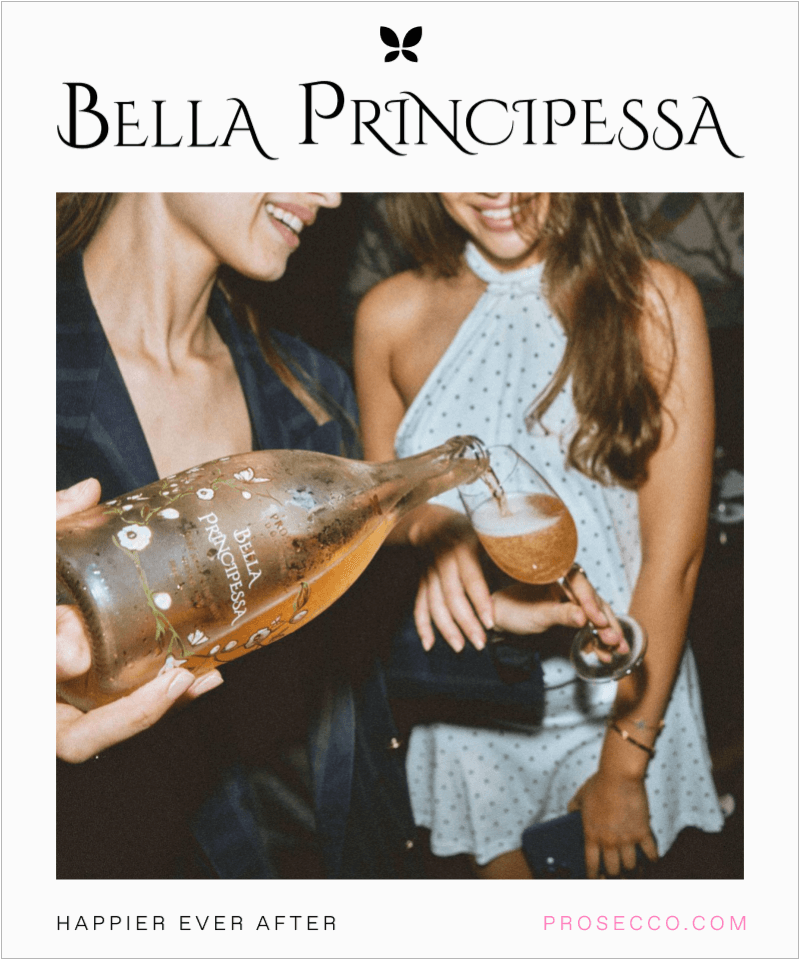Prosecco Rosé, a delightful variant in the world of sparkling wines, often prompts the question: Is it dry or sweet? This frequently asked question is particularly relevant for those who enjoy Prosecco Rosé from brands like Bella Principessa Prosecco and Signorina Prosecco, as it speaks to the wine’s versatility and suitability for various palates and occasions.
The Spectrum of Sweetness in Prosecco Rosé
Prosecco Rosé can range from dry to sweet, depending on the specific production style and the amount of residual sugar in the wine.
The sweetness level of Prosecco Rosé is influenced by several factors, including the grape varieties used, the winemaking process, and, crucially, the residual sugar level after fermentation. This range allows for various taste profiles within the Prosecco Rosé category, catering to different preferences for sweetness in sparkling wines.
Understanding Prosecco Rosé Labels
The label on a bottle of Prosecco Rosé often indicates its sweetness level. Similar to traditional Prosecco, Prosecco Rosé can be classified into different categories like brut, extra dry, and dry, corresponding to increasing sweetness levels.
Brut Prosecco Rosé is the driest, containing the least residual sugar, while extra dry is slightly sweeter, and dry Prosecco Rosé has the highest sugar content. Brands like Bella Principessa Prosecco and Signorina Prosecco may offer various styles to cater to different tastes.
The Role of Grapes and Production Method
The primary grape in Prosecco Rosé is the Glera grape, blended with a red grape variety such as Pinot Noir to achieve the rosé color.
The blend of grapes and the Charmat method used in production, where secondary fermentation occurs in steel tanks, contribute to the final sweetness level. The method is instrumental in retaining the fresh and fruity characteristics of the grapes, which can influence the perception of sweetness in the wine.
The Perception of Sweetness in Prosecco Rosé
It’s important to note that the natural fruit flavors in Prosecco Rosé, such as notes of strawberry, raspberry, and floral undertones, can give an impression of sweetness even in drier styles.
This aspect is particularly relevant for brands like Signorina Prosecco, which may highlight the wine’s fruity characteristics, impacting how sweet the Prosecco Rosé tastes to consumers.
The Versatility of Prosecco Rosé
Prosecco Rosé’s versatility, ranging from dry to sweet, makes it suitable for various occasions and pairings. Dry Prosecco Rosé can be an excellent choice as an aperitif or paired with light appetizers, while sweeter versions may complement desserts or be enjoyed independently. The diversity within the Prosecco Rosé category, including offerings from Bella Principessa Prosecco, provides options for everyone, from those who prefer a crisp, refreshing wine to those who enjoy a touch of sweetness.
Prosecco Rosé in the Global Wine Market
Prosecco Rosé has carved out a niche for itself in the global wine market, appealing to a broad range of consumers with its balance of flavors and sweetness levels.
The wine’s popularity is a testament to its appeal as a versatile and accessible option among sparkling wines, offering a unique combination of the lightness of Prosecco with the allure of rosé.
Conclusion: The Sweet and Dry Harmony of Prosecco Rosé
In conclusion, Prosecco Rosé can be both dry and sweet, with its specific taste profile depending on the production style and the residual sugar content. Whether enjoying a glass of dry Prosecco Rosé from Bella Principessa Prosecco or a sweeter version from Signorina Prosecco, this sparkling wine offers a delightful experience that caters to various preferences.
Understanding the nuances of Prosecco Rosé’s sweetness spectrum enhances the appreciation of this charming and versatile Italian sparkling wine.










